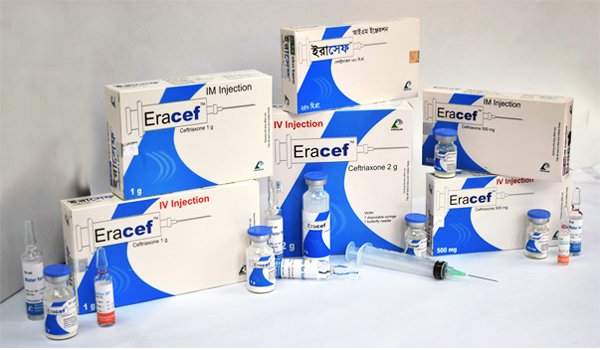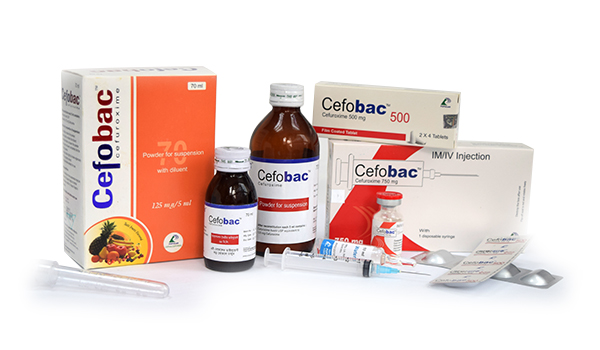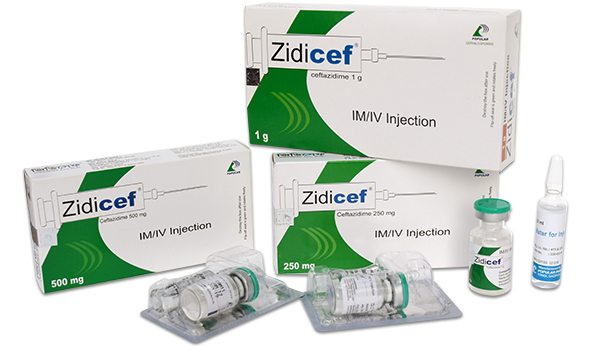Indication
Ceftriaxone is indicated for the treatment of the following major infections when caused by susceptible organisms:
Lower respiratory tract infections: caused by Streptococcus pneumoniae, Staphylococcus aureus, Haemophilus influenzae, Haemophilus parainfluenzae, Klebsiella pneumoniae, E. coli, Enterobacter aerogenes, Proteus mirabilis, Serratia marcescens.
Acute bacterial otitis media: caused by Streptococcus pneumoniae, Haemophilus influenzae (including beta-lactamase producing strains), Moraxella catarrhalis (including beta-lactamase producing strains).
Skin and skin structure infections: caused by Staphylococcus aureus, Staphylococcus epidermidis, Streptococcus pyogenes, Viridans group streptococci, E. coli, Enterobacter cloacae, Klebsiella oxytoca, Klebsiella pneumoniae, Proteus mirabilis, Morganella morganii, Pseudomonas aeruginosa, Serratia marcescens, Acinetobacter calcoaceticus, Bacteroides fragilis, Peptostreptococcus species.
Urinary tract infections (complicated and uncomplicated): caused by E. coli, Proteus mirabilis, Proteus vulgaris, Morganella morganii, Klebsiella pneumoniae.
Uncomplicated Gonorrhea (cervical, urethral, pharyngial and rectal): caused by Neisseria gonorrhoeae, including both penicillinase- and nonpenicillinase-producing strains, and pharyngeal gonorrhea caused by nonpenicillinase-producing strains of Neisseria gonorrhoeae.
Pelvic inflammatory diseases: caused by Neisseria gonorrhoeae.
Bacterial septicemia: caused by Staphylococcus aureus, Streptococcus pneumoniae, E. coli, Haemophilus influenzae, Klebsiella pneumoniae.
Bone and joint infections: caused by Staphylococcus aureus, Streptococcus pneumoniae, E. coli, Proteus mirabilis, Klebsiella pneumoniae, Enterobacter species.
Intra-abdominal infections: caused by E. coli, Klebsiella pneumoniae, Bacteroides
fragilis, Clostridium species, Peptostreptococcus species.
Meningitis: caused by Haemophilus influenzae, Neisseria meningitidis, Streptococcus pneumoniae.
Ceftriaxone has also been used successfully in a limited number of cases of meningitis and shunt infection caused by Staphylococcus epidermidis and E. coli.
Dosage & Administration
Ceftriaxone may be administered by deep intramuscular injection or slow intravenous injection. Neonate: For the treatment of skin and skin structure infections, the recommended total daily dose is 50 to 75 mg/kg given once a day (or in equally divided doses twice a day). The total daily doses should not exceed 2 g. For the treatment of acute bacterial otitis media, a single intramuscular dose of 50 mg/kg (not to exceed 1 g) is recommended. Infants and children under 50 kg: 20-50 mg/kg daily; up to 80 mg/kg daily. In severe infections, doses of 50 mg/kg and over by intravenous infusion only; For otitis media due to H. influenzae, doses are from 75 to 100 mg/kg/day administered in equally divided doses every 6 or 12 hours, but should not exceed 4 g per day. Dosage for children should not exceed dosage recommended for adults. 50 kg and over: adult dose should be recommended. Adults and children (12 years and over): In normal infection 1 g daily; 2-4 g daily in severe infections. The total daily dose should not exceed 4 g. Elderly: Dosage adjustment is not required if hepatic and renal functions are satisfactory. Surgical prophylaxis: By deep intramuscular injection or by intravenous injection over at least 2-4 minutes, 1 g at induction, continue for ≥ 2 days after signs and symptoms of infection disappear. Usual duration is 4 to 14 days. In complicated infections, longer therapy may be required. Serious urinary tract infections, including prostatitis; 500 mg every 6 hours or 1 g every 12 hours may be administered. Larger doses (up to 1 g every 6 hours) may be given for severe or chronic infections.
Preparation of Solutions
For intramuscular injection: Add 2 ml of Lidocaine Hydrochloride BP 1% injection to 250 mg or 500 mg vial whereas 3.5 ml of Lidocaine Hydrochloride BP 1% injection to 1 g vial and shake the vial well until the powder is dissolved properly. For intravenous injection: Add 5 ml of Water for Injection BP to 500 mg vial, 10 ml of Water for Injection BP to 1 g vial whereas 20 ml of Water for Injection BP to 2 g vial and shake the vial well until the powder is dissolved properly.
The use of freshly reconstituted solution is recommended. However, it maintains
potency for at least 6 hours at room temperature or 24 hours at 5o C.
Precautions
Cephalosporins can cause diarrhea. If diarrhea becomes severe, doctor should be reported. Diabetic patient may get a false-positive result for sugar in urine. The dose of diabetic medicine should not be changed without consulting the doctor. The admixture of beta-lactam antibacterials (Penicillins and Cephalosporins) and Aminoglycosides may result in substantial mutual inactivation. If they are administered concurrently, they should be administered in separate sites. In severe renal impairment accompanied by hepatic insufficiency, dosage reduction is required.
Use in pregnancy: Its safety in human pregnancy has not been established. Therefore it should not be used in pregnancy unless absolutely indicated.
Use in lactation: Ceftriaxone is excreted in breast milk at low concentrations. Therefore, caution should
be exercised when Ceftriaxone is administered to a nursing mother.






